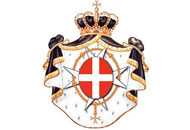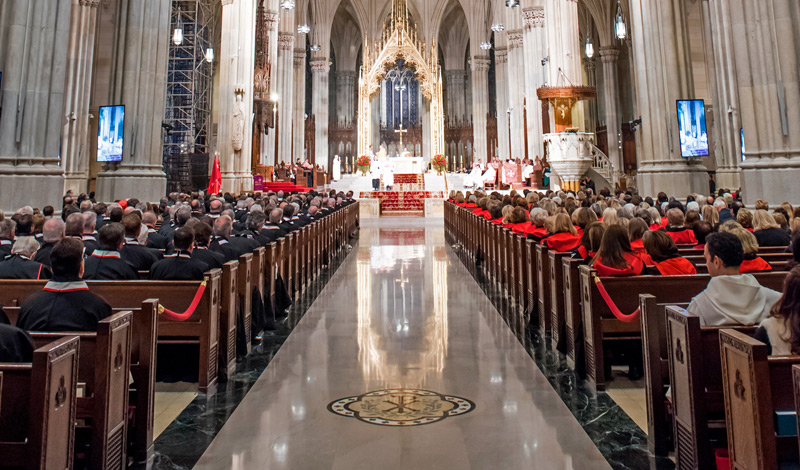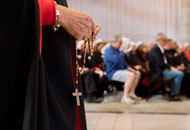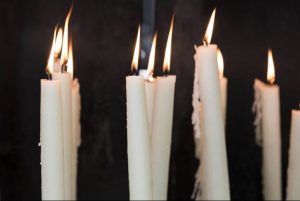Order of Malta
- About The Order
-

About the Order The Sovereign Military Hospitaller Order of Saint John of Jerusalem of Rhodes and Malta is one of the oldest institutions of Western and Christian civilization. The 13,500 Knights and Dames remain true to its principles – nurturing, witnessing and protecting the faith and serving the poor and the sick.
- The Order
- Seat in Rome
- Grand Master
- Organization Chart
- Permanent Observer Mission
- The Magistral Library
- International News
- Other U.S. Associations
- Other National Institutions
-
- American Association
-

The American Association Founded in 1927 as the first association of the Order of Malta in the Americas, the association is headquartered in New York City with over 2,000 Knights, Dames and volunteers in over 30 Areas working with the poor, sick, and incarcerated and giving witness to the Catholic faith.
- History
- Leadership
- Membership
- Finances
- Auxiliary/Associates
- Year of Formation
- Area Web Sites
- Latest News
- Spirituality
-

Spirituality Knights and Dames join the Order of Malta to pursue their spiritual growth over a path laid out by Blessed Gerard more than nine hundred years ago, seeking to nurture and witness the Faith and assist the sick and the poor.
- Daily Prayer of the Order of Malta
- Daily Readings and Reflections
- Saints and Blesseds
- Spiritual Outreach Calls
- Chaplains’ Corner
- Subpriory of Our Lady of Lourdes
- Association Retreats
- Fall/Winter Spiritual Initiative
- Eucharistic Ministry Online Course
- Spirituality In Action
-

Spirituality in Action Members are involved in hands-on work at over 100 hundred organizations, including food banks, hospitals, pregnancy support centers, homeless shelters and mentoring programs for at risk children.
- Prison Ministry
- Overview
- Lourdes Pilgrimage
- Pilgrimage for Life
- Wisconsin Pilgrimage
- Baby Steps Camino™
- Respect Life
- Annual Investiture
- Area Grants Program
- Association Newsletters
- Calendar & Events
- Donate Now
-
Donations & Payments You can make a donation, pay your Annual Contribution as a member, purchase a Mass Card, register for AmazonSmile, and more. Be sure to review the Association’s Privacy Policy and Account Agreement.
- Donations & Payments
- Privacy Policy
- Account Agreement
- Mass Cards
- Called to Serve
- Contact Us
-
- Home / Spirituality in Action /
Lourdes Pilgrimage /
Pilgrimage By Year /
2017 Lourdes Pilgrimage / Relighting Candles
Relighting Candles
The following is a column written by Daniel M. Fitzpatrick, KM from The Greenwich Sentinel on Friday, May 12, 2017.
I am writing this in a small hotel room in a small French town in the heights of the Pyrenees Mountains at the border with Spain. Notwithstanding its size and remote location, this town is a
very popular place, with more hotel capacity than any other municipality in France save Paris; it hosts around six million visitors a year from all over the world. The name of this small town is Lourdes.
 Lourdes is famous because on 18 separate occasions in 1858, a poor young peasant girl named Bernadette Soubirous experienced and interacted with visions of “a beautiful lady” who appeared in a niche high in the wall of an open cave (grotto) at Massabiele on the outskirts of town. When asked her name, the lady replied, “I am the Immaculate Conception,” a title and concept the illiterate
Lourdes is famous because on 18 separate occasions in 1858, a poor young peasant girl named Bernadette Soubirous experienced and interacted with visions of “a beautiful lady” who appeared in a niche high in the wall of an open cave (grotto) at Massabiele on the outskirts of town. When asked her name, the lady replied, “I am the Immaculate Conception,” a title and concept the illiterate
Bernadette could never have heard, imagined or understood, and which could apply only to the Virgin Mary, the mother of Jesus Christ. Skeptical at first, local Church officials eventually accepted the validity of these Marian apparitions and established Lourdes as an important Marian shrine. The Massabiele Grotto is also the site of a spring, uncovered by Bernadette during one of the apparitions, the water of which is credited with many unexplained physical cures, some of which have been determined to be miraculous.
Inexplicable physical cures continue in Lourdes to this day, as does the very rigorous process of verification, evaluation and classification. Medical cases must be fully documented and a period of many years must pass before the cure is presented to the independent Lourdes Medical Bureau for scientific evaluation (the Bureau is composed of prominent medical professionals of all faiths and is not affiliated with the Catholic Church). Only after a cure is determined by that body to be “unexplained by current scientific knowledge” is it forwarded to the International Medical Committee of Lourdes (CMIL) and the Catholic Church for further consideration. The Church’s evaluative process is much like a trial, with one party laying out the case for a miracle while another (traditionally referred to as “The Devil’s Advocate”) arguing the opposite. Only after both bodies agree is the cure considered miraculous. To give a sense of proportionality: of the roughly 7,000 cases submitted to this process, only 69 have been certified as scientifically inexplicable miracles by both CMIL and the Catholic Church. The most recent Lourdes miracle occur red in 1989 and was certified in 2013.
Many come to Lourdes to pray and seek healing, whether physical, emotional or spiritual. Some are curious, some are skeptics, some are true believers. It is an unusual place. The town itself is physically unexceptional, save for the looming presence high on a hill of the preserved remains of a chateau-fort whose origins date back to Roman times and which was besieged by Charlemagne
in 778. Hospitality and everpresent tourist-merchandising (think all manner of religious items ranging from tony to tacky) drive the local economy. But smack in the middle of it all is the Domain, 126 park-like acres of peace and quiet, ideal for contemplation, a welcome sanctuary from the noisy commercialism outside its gates. The Domain surrounds the Grotto and contains 22 separate
places of worship.
On March 2, 1858, the lady said to Bernadette, “Go, tell the priests to come here in procession.” Today there are two daily processions, the Blessed Sacrament Procession at 5 p.m. and the Torchlight Marian Procession at 9 p.m. Both are beautiful, richly symbolic and spiritually uplifting. While the former is most spiritually significant (Catholics believe that the consecrated Host, while in appearance bread, is in reality the true body and blood, soul and divinity of Jesus Christ), the latter is visually spectacular, with thousands of “pilgrims” walking together, holding candles and singing hymns in dozens of languages. It is basically “mobile prayer,” and it is a deeply moving experience.
Occasionally, when in procession, a stray gust of wind can blow a pilgrim’s candle out. No problem: there is always someone walking alongside who can help relight it.
Let’s reflect on that image for a moment. How often has light gone out in our lives? Where we find ourselves walking in the dark, incapable of self-reillumination? Knowing we need help but unsure where to turn? Where there is always someone near us who can help, if we only ask?
Why is it often so hard to ask for help? Is it fear? Is it pride? We are surrounded in life by fellow travelers, walking on individual paths towards a common destination. There is wisdom and encouragement in their stories. And some believe God is an omnipresent companion with us on our personal journeys. All sources of abundant assistance, waiting only for a request.
Sometimes that gust of wind is a blessing in disguise, forcing us to accept the fact that we are less the author of our destiny, and more a participant. Requiring action, and shifting focus beyond
independence and self-reliance to an acknowledgement of fundamental dependence on the support of others. Taking that step, responding to that challenge, reaching out for assistance, puts us back on track.
Re-lighting our candle by sharing the light of another: a small action with potentially miraculous results.
Dan FitzPatrick is an active member of the community and volunteer. He serves on the board of Greenwich Emergency Medical Services, Inc.

Order of Malta
American Association, U.S.A
St. Patrick’s Cathedral Parish House
14 E 51st Street
New York, NY 10022
(212) 371-1522